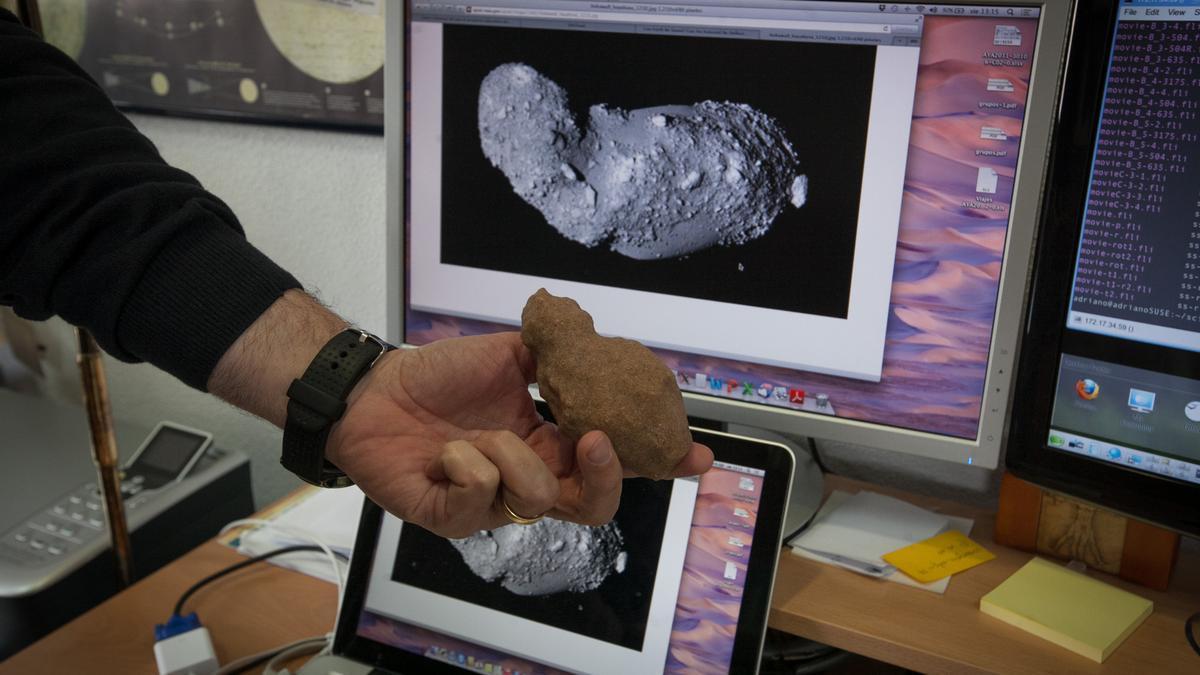Researchers from the University of Alicante, involved in the NASA international project that seeks to protect the Earth from possible asteroid impacts, have already detected the presence of three other rocky space objects that in all probability they would approach our planet in the margin of one month, approximately between November 25 and December 27.
Although the director himself UA Planetary Sciences Groupthe Professor Adriano Campo Bagatinprecisely that the proximity of these asteroids does not have to imply danger of impact, because the predicted distance of space rocks is similar to that of Earth to the Moon In two of the cases, and somewhat greater in the third, I do admit that they give an idea of how important it is to continue investigating in this line, because the presence of nearby asteroids corroborates that it occurs to a much greater extent than we may initially think» and reminds us that you have to be alert”, he points out.
Collision
The precision of the measurements carried out by this UA Astronomy and Astrophysics research group, members of the aforementioned NASA missionhave meant a whole revolution for the world project since they have far exceeded the possibility of diverting the orbit of these objects and avoiding their impact with the Earth.
Got it hopeful result, a good deviation has been achieved
Researcher Astronomy and Astrophysics, UA
The forecast of this deviation caused, encrypted and initially scheduled for 73 seconds, it has finally reached 33 minuteswhich implies a resounding success for the mission, although the scientists continue to exercise extreme caution in the absence of aanalyze in detail the mass, the internal structure and all the possible effects of the collision caused this September on the surface of the Dimorphos asteroid in the framework of this mission that caused it to collide with the surface of the DART spacecraft.
Detour
Adriano Campo admits, however, that what was obtained is «encouraging» because «a good deviation» has been achieved.
Now, insists the professor from Alicante, it is time to continue studying the system as a whole from the Dimorphos asteroid reaction to collisionfrom its internal structure, to be able to equally assess if it is extrapolated to other asteroids and to what extent
We will be able to assess the effectiveness of deflecting the asteroid’s orbit in the event of a future threat
Researcher Astronomy and Astrophysics, UA
The impact of the DART spacecraft with the Dimorphos asteroid, with 160 meters in diameter, occurred at 23,400 kilometers per hour. The researchers, based on their measurements in the orbit deviation and the images that were taken, are now going to publish their results and end this particular mission in September 2023.
“It will be with the complete results of our collaboration in defense against the impact of asteroids, when we will be able to know what we are capable of doing in a situation of this type in the futureeither with precision or with a certain approximation”, assesses Campo.
Science
At the end of 2024, a new step will be taken in the collaboration of UA researchers in astronomical science.
It is planned that the European Space Agency (ESA) sends its spacecraft Hera, precisely designed to measure all of the above features, mass, internal structure, and effects of collision on the surface of Dimorphos. In this phase, the Planetary Sciences team of the University Institute of Physics Applied to Science and Technology at the UA will also play an essential role.
“The European probe Hera will take off in a couple of years and then it will be possible to really enter into a deep understanding of the system and the reactions based on the measurements”, points out the researcher from Alicante.
Related news
So that when the researchers involved in this mission do the accounts of everything observed «we can begin to assess with a certain margin of error what the effectiveness is», and how far you can go in asteroid deflection “in the event of a future threat”, concludes the professor.
This first success of the international mission therefore marks the course to follow in the face of a future situation that could threaten the survival of planet Earth.

